Etiqueta "compiladores"
Se han encontrado 5 Coincidencias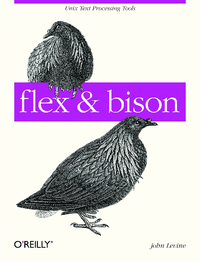
flex & bison
Compiladores
191 Visitas | 278 Descargas | 2013-12-12 15:50:48 | epcosta
flex & bison es un libro que nos adentra en el mundo de los compiladores mediante el uso de herramientas automatizadas en este caso los decendientes de lex y yacc de los sistemas unix originales.
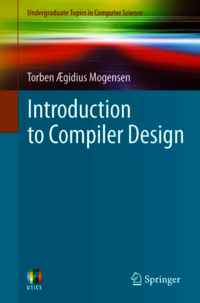
Introduction to Compiler Design
172 Visitas | 274 Descargas | 2014-01-28 19:43:12 | josedanielr
The 1rst chapters of the book describes the methods and tools required to read program text and convert it into a form suitable for computer manipulation. This process is made in two stages: A lexical analysis stage that basically divides the input text into a list of “words”. This is followed by a syntax analysis (or parsing) stage that analyses the way these words form structures and converts the text into a data structure that reflects the textual structure. Lexical analysis is covered in Chap. 1 and syntactical analysis in Chap. 2. The remainder of the book (Chaps. 3–9) covers the middle part and back-end of interpreters and compilers. Chapter 3 covers how definitions and uses of names (identifiers) are connected through symbol tables. Chapter 4 shows how you can implement a simple programming language by writing an interpreter and notes that this gives a considerable overhead that can be reduced by doing more things before executing the program, which leads to the following chapters about static type checking (Chap. 5) and compilation (Chaps. 6–9. In Chap. 6, it is shown how expressions and statements can be compiled into an intermediate language, a language that is close to machine language but hides machine-specific details. In Chap. 7,it is discussed how the intermediate language can be converted into “real” machine code. Doing this well requires that the registers in the processor are used to store thevalues of variables, which is achieved by a register allocation process, as described in Chap. 8. Up to this point, a “program” has been what corresponds to the body of a single procedure. Procedure calls add some issues, which are discussed in Chap. 9. The book uses standard set notation and equations over sets. Appendix contains a short summary of these, which may be helpful to those that need these concepts refreshed.
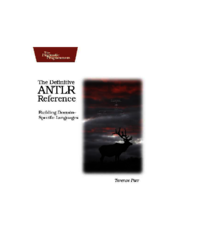
The Definitive ANTLR Reference
57 Visitas | 92 Descargas | 2014-03-11 13:36:37 | orosado
ANTLR is a parser generator that automates the construction of language recognizers. It is a program that writes other programs. From a formal language description, ANTLR generates a program that determines whether sentences conform to that language. By adding code snippets to the grammar, the recognizer becomes a translator. The code snippets compute output phrases based upon computations on input phrases. ANTLR is suitable for the simplest and the most complicated language recognition and translation problems. With each new release, ANTLR becomes more sophisticated and easier to use. ANTLR is extremely popular with 5,000 downloads a month and is included on all Linux and OS X distributions. Perhaps most importantly, ANTLR is much easier to understand and use than many other parser generators. It generates essentially what you would write by hand when building a recognizer and uses technology that mimics how your brain generates and recognizes language.
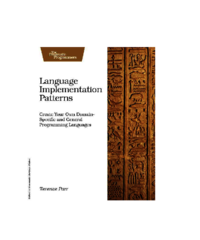
Language Implementation Patterns
85 Visitas | 134 Descargas | 2014-03-15 02:18:50 | orosado
This book gives you just the tools you’ll need to develop day-to-day language applications. You’ll be able to handle all but the really advanced or esoteric situations. This book explains how existing language applications work so you can build your own. To do so, we’re going to break them down into a series of well-understood and commonly used patterns. But, keep in mind hat this book is a learning tool, not a library of language implementations. You’ll see many sample implementations throughout the book, though. Samples make the discussions more concrete and provide excellent foundations from which to build new applications. It’s also important to point out that we’re going to focus on building applications for languages that already exist (or languages you design that are very close to existing languages).
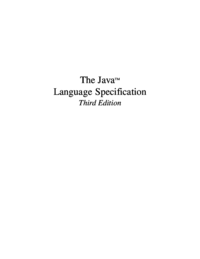
The Java Language Specification Third Edition
108 Visitas | 142 Descargas | 2014-06-16 18:13:55 | orosado
The Java programming language is a general-purpose concurrent class-based object-oriented programming language, specifically designed to have as few implementation dependencies as possible. It allows application developers to write a program once and then be able to run it everywhere on the Internet. This book attempts a complete specification of the syntax and semantics of the language. We intend that the behavior of every language construct is specified here, so that all implementations will accept the same programs. Except for timing dependencies or other non-determinisms and given sufficient time and sufficient memory space, a program written in the Java programming language should compute the same result on all machines and in all implementations.
Contribuir
Usted puede contribuir con Libros UCLV, es importante para nosotros su aporte..
Contribuir